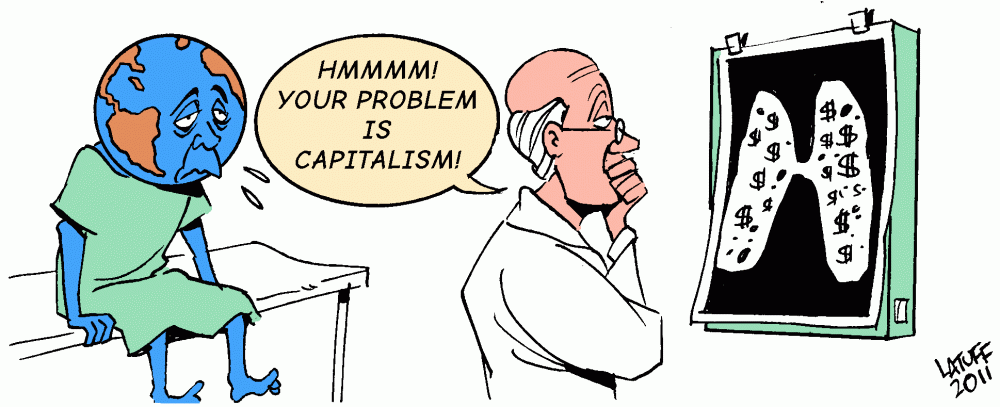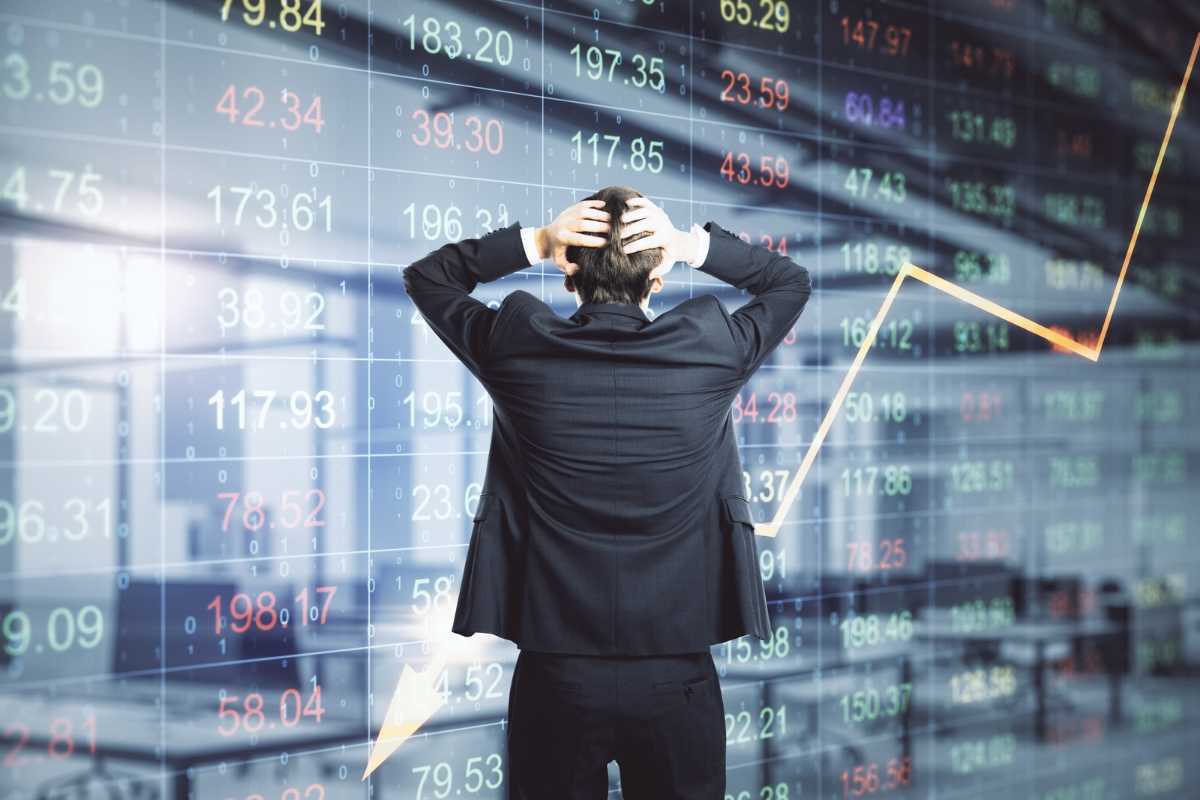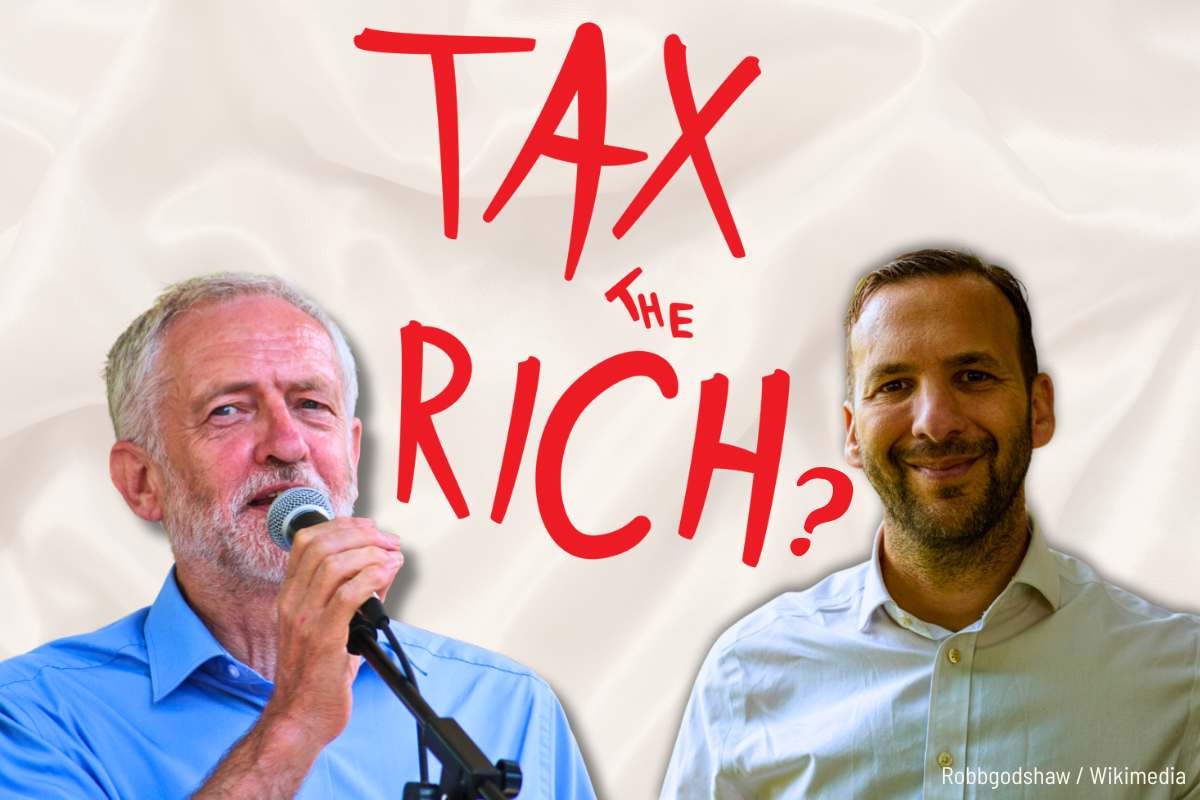Recent events in Turkey and Argentina have highlighted the fragility of the so-called “emerging” economies. But, in reality, the whole world economic system is a house of cards waiting to collapse.
While all eyes are on the unfolding trade war between China and the United States, another crisis in the world economy is threatening to spin out of control. Since April, Argentina and Turkey have seen their currencies collapse and inflation spiral. Other so-called emerging economies such as Indonesia, India, Brazil and South Africa are also coming under similar pressures.
The Central Bank of Argentina was recently forced to raise interest rates to a record 60 percent in order to stop the slide of the country’s currency, which lost 12 percent of its value against the US Dollar over two days. Having spent most of its currency reserves to defend the Peso, President Mauricio Macri’s government has had to beg the IMF to speed up a bailout package worth $50bn.
The latest fall of the Peso comes on top of a continuous decline, which since April has taken off more than 50 percent of the currency’s value against the dollar. At the same time, inflation has crept up above 30 percent. The resulting instability is in turn pushing the economy into a crisis, leading to further capital flight.
Crises in Turkey
 A similar situation is developing in Turkey, where the Lira has lost 40 percent of its value against the dollar in the past year as inflation has shot up to 18 percent. Last Monday, the Turkish central bank announced a 6.25 percent rise of the interest rate to 24 percent in order to stop the free fall of the Lira. But after a short stabilisation, the currency has continued its depreciation.
A similar situation is developing in Turkey, where the Lira has lost 40 percent of its value against the dollar in the past year as inflation has shot up to 18 percent. Last Monday, the Turkish central bank announced a 6.25 percent rise of the interest rate to 24 percent in order to stop the free fall of the Lira. But after a short stabilisation, the currency has continued its depreciation.
From 2002 to 2008 the Turkish economy was developing at a rapid pace. As an untapped pool of cheap labour on the border of EU, the Turkish economy rapidly grew on the back of the pre-2008 boom in Europe. Turkish GDP nearly quadrupled (tripled if adjusted for inflation) from $200bn in 2001 to $764bn in 2008.
But the 2008 world economic crisis ended the period of organic growth and the following year saw a contraction of the Turkish economy similar to many other countries. Since then, the economy has been increasingly dependent on speculative money and cheap credit flowing from western countries to keep growth levels up.
Turkish banks alone went from a net foreign debt of zero in 2008 to $100bn today. $6-9bn of these loans are maturing every month. At the same time, the AKP government has embarked on a massive Keynesian spending spree, investing in huge, prestigious infrastructure projects and property developments in order to maintain its political rule. Thus, the construction sector, which employs 2m workers, amounts to 18.7 percent of the GDP. According to official figures, at the end of 2016, 90 percent of funding for Turkish real estate companies was based on loans in foreign currencies. In total, Turkish foreign debt stands at 52 percent of its GDP.
The AKP government, desperate to maintain its voter base, has been fanning the fire, funding enormous prestige projects by deficit spending. In the run-up to the previous elections, it used its Credit Guarantee Fund to guarantee billions of dollars of loans in the private sector.
At the same time, the ruling class has been promoting enormous growth of credit amongst the masses, taking household debt from around 2.5 percent of GDP in 2014 to 17.30 percent in 2017.
The Erdogan government thought that it could borrow its way out of the crisis, and keep the economy afloat by flooding the market with cheap credit. But as always, debt has to be repaid sooner or later, with interest.
Consequently, the Lira has been debased leading to a steep fall in the currency markets as well as high inflation internally. Reluctantly, the government has been forced to accept huge interest rate rises in order to avert an uncontrolled spiral of inflation and a collapse of the currency.
The situation is only made worse by Turkey’s high dependence on imports of vital goods such as energy as well as steel, which it imported to the tune of $8bn per year by the end of 2017, before the value of the Lira halved. This makes the economy even more sensitive to foreign exchange fluctuations.
On top of all this, the US has imposed a series of tariffs on Turkish goods in a brewing conflict between the two supposed allies. This has brought out all the underlying weaknesses of the economy.
In this situation, the rise of the value of the dollar spells an impending disaster for the Turkish economy. Already, several major Turkish corporations have had trouble paying their creditors and more are at risk of defaulting on their loans now that the Lira is worth half as much as a year ago.
Argentina’s twin deficits
 Argentina, like Turkey, is also running a so-called twin deficit. That is, it has a serious yearly budget deficit as well as a current account deficit, making it dependent on foreign credit. Yearly Foreign Direct investments trebled from $3.2 billion in 2016 to $11.9 billion in 2017, in total making up more than 16 percent of GDP.
Argentina, like Turkey, is also running a so-called twin deficit. That is, it has a serious yearly budget deficit as well as a current account deficit, making it dependent on foreign credit. Yearly Foreign Direct investments trebled from $3.2 billion in 2016 to $11.9 billion in 2017, in total making up more than 16 percent of GDP.
Meanwhile, the state was running a yearly budget deficit of around 5 percent. This was being funded, on the one hand, by foreign debt; and, on the other, by printing billions of Pesos, thereby gradually debasing the currency.
But all was fine as long as long as foreign money was flowing in. Assured by the right-wing Macri government’s promises to protect their interests, foreign speculators were satisfied with covering the growing trade and budget deficits. Until that is, the dollar price started creeping upwards at the beginning of this year.
But Argentina and Turkey are only the most acute indication of a much deeper problem. Brazil, Indonesia and South Africa, all sizeable economies, are dealing with similar, albeit less acute, crises.
Other so-called emerging economies are not far behind. 16 of these countries alone sit on $3.4tn of foreign debt. Their foreign exchange reserves however only amount to $1.3tn. Most of these are also heavily dependent on cheap credit as well as a stable dollar value.
In total, in these ‘emerging markets’, debt amongst the non-banking private sector has increased sharply since 2008-09, reaching 129 percent of GDP today. At the same time, loose monetary policies have gradually debased their currencies. Over the past five years, the currencies of Argentina, Ukraine, Egypt, Turkey, and Brazil have all declined by 80.3 percent, 69.0 percent, 60.9 percent, 60.5 percent and 42.5 percent respectively against the dollar.
The Indian Rupee is on the same path, having lost 13.50 percent of its value against the dollar in the past 12 months, reaching an all-time low. Meanwhile, the interest rates on government-issued bonds reached 8.19 percent because investors are less willing to lend money to the state as they have less confidence that these will be paid back.
The Indian economy, the sixth largest in the world, is in a very weak state and a rising dollar, affecting crucial imports such as oil, could have a disastrous effect, leading to a vicious downward spiral.
Built on sand
 On paper, the world economy seems to be doing great. World GDP is set to grow by 3.9 percent in 2018, unemployment figures have been decreasing over the past year and the Dow Jones index at the New York stock exchange is at its highest level ever.
On paper, the world economy seems to be doing great. World GDP is set to grow by 3.9 percent in 2018, unemployment figures have been decreasing over the past year and the Dow Jones index at the New York stock exchange is at its highest level ever.
Yet, 10 years after the collapse of Lehman Brothers and the global financial crisis, a crisis of new proportions is looming on the horizon.
The ruling class found a way out of the 2008 crisis by carrying out austerity and pushing down wages, while simultaneously pumping trillions of dollars of cheap credit into the system.
The US interest rate stood at 0.20 percent – an all-time low. The interest rates were so low, that not taking out loans was bad business for the big capitalists. But far from solving the crisis of capitalism, these measures only prepared for far bigger crises to come.
Total world debt today stands at $217tn, or 327 percent of world GDP: the highest in history. But very little of this money has been invested in actual production. In fact, investment rates have not been lower since the 1960s. Instead, the money has been flowing through the world economy creating inflationary bubbles in different sectors such as housing and the stock markets.
Zombie capitalism
The cheap credit saved the capitalist class, but it did not solve anything fundamentally. A major problem arising from this is the new undergrowth of ‘zombie companies’ throughout advanced economies. These are companies that make less profit than their interest payments on their debt. They have only been kept alive by cheap credit. In the US, ten percent of all companies fall into this category.
If interest rates rise above 2 percent (they are expected to reach 3 percent by 2020) $2.3tn worth of US companies would be zombie companies. The Bank for International Settlements estimates that the proportion of zombie companies in six major eurozone economies, including Germany, France and Spain, has risen from 5.5 percent in 2007 to 10 percent today. Other surveys indicate that the proportion in Italy and Spain has tripled in a decade.
The ‘emerging economies’ are not much different in that they are, from a capitalist point of view, unsustainable economies that have been kept afloat by cheap credit. While debt levels in the advanced economies grew by 20 percent from 2007 to 2016, they grew by 280 percent in the emerging markets!
Indeed, a huge proportion of world growth after 2008 has been coming from the ‘emerging markets’. In 2016, the seven main countries often named as emerging markets accounted for 1 percentage point of the 2.4 percent world economic growth. The G7 on the other hand only contributed 0.7 percentage points.

If the Federal Reserve could keep printing money, all would be well, but it cannot. Sooner or later this would lead to spiralling inflation. In fact, inflation went from -0.09 percent in January 2015 to 2.07 percent in January 2018 and shot up to 2.95 percent by July. Consumer price increases are at their highest since 2011 and they are expected to continue to rise.
Until now price inflation has been moderate because the US wages were being pushed down and unemployment was rising – that is, demand was low. But in the last year, recovery in the US has meant a slight increase in household income and a drop in unemployment. This is now bringing out the contradictions accumulated after the 2008 crisis.
In order to avert runaway inflation, or what bourgeois economists call “overheating” of the economy, the ruling class has been trying to end quantitative easing and gradually raise interest rates. The US Federal Reserve has ended its QE programme and its base rate now stands at 1.75 percent and is expected to go up to 3 percent next year.
The US recovery and rising interest rates are also pushing up the price of the dollar – which is particularly strong because other G7 countries have still kept their interest rates at record lows.
House of cards collapsing
 What we see in the emerging economies are the first consequences of this process. As cheap credit dries up and the dollar rises, all the underlying weaknesses of these economies come to the fore.
What we see in the emerging economies are the first consequences of this process. As cheap credit dries up and the dollar rises, all the underlying weaknesses of these economies come to the fore.
US President Donald Trump has been heavily critical of the Federal Reserve for raising interest rates. But the fact is that the central banks have little room for manoeuvre. If all the excess money printed in the past period is not reigned in, it could lead to an uncontrolled spiral of inflation and crisis, which would, in the end, force it to raise the rates, just like what happened in Turkey.
In fact, interest rates on US treasury bonds and other loans that are not controlled by the FED have already been going up. Over 20 months, the interest rates of US ten-year Treasury bonds more than doubled, from 1.38 percent to 2.94 percent in February 2018, reflecting rising inflation and expectations of rising economic instability in the next period.
What we see here are the first signs of the collapsing of the house of cards built to sustain the world economy after the 2008 crisis. The ruling class thought that it could find a way out of the crisis by pumping trillions of dollars into the system. But it has only managed to create even bigger contradictions.
Crisis and class struggle
 The world economy is littered with flammable material – from the brewing crisis in the ‘emerging economies’ to the zombie companies in the advanced capitalist countries.
The world economy is littered with flammable material – from the brewing crisis in the ‘emerging economies’ to the zombie companies in the advanced capitalist countries.
Most importantly, these looming crises will have the effect of pushing the class struggle to new levels.
In Turkey, the comfortable rule of the AK Party is no longer guaranteed as millions of Turks are seeing their income being eaten up by inflation and their mortgages and loans payments soar.
In Argentina, Macri has announced a vicious austerity package, which this year alone will be worth 1.2 percent of GDP and 1.4 percent next year.
In the US and in Europe – where the European Central Bank has announced interest rate hikes next summer – mortgages are set to rise dramatically and millions of jobs could be at risk when the undergrowth of unprofitable banks and companies are hit by rising interest rates.
This time, unlike in 2008, the capitalists will not have the same tools – i.e. printing money and offering low interest rates – to avert a crisis. Those tools have already been used up.
Of course, the majority of the burden for the crisis, as has been the case until now, will be put on the shoulders of the working class. This will push the workers into the arena of struggle in one country after another to defend their living standards.
Ironically all of this is taking place at a time where the productive capacity of humanity has never been higher. But within the confines of capitalism the means of production cannot be used for a harmonious development of society.
Capitalism is an anarchic system with its own laws far beyond the control of humanity. The only way out of the impasse is to overthrow the system and replace it with a socialist planned economy, which can use the enormous potential of humanity that is otherwise squandered in the neverending misery of capitalism.






